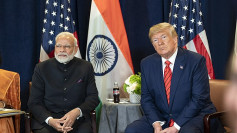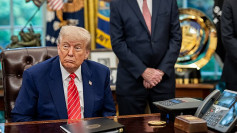U.S. soybeans producers are no longer seeing China as their main market but are going all out to diversify their markets to prevent a repeat of the catastrophe that befell them because of Trump's trade war. They also don't believe Trump's claim China will be buying up to $50 billion worth of U.S. soybeans "pretty soon."
They point to the fact China now buys almost all its soybeans elsewhere since Trump launched his trade war against China 18 months ago. China bought $27 billion worth of U.S. soybeans in 2017, the year before Trump's trade war. Those purchases have since fallen by 98%. In 2018, China bought only $8.6 billion in U.S. agricultural products, including soybeans.
Market analysts said the Chinese might shift away from their current sources such as Brazil to buy from the U.S. On the other hand, it will be impossible for China to immediately purchase a massive supply worth $50 billion because China simply doesn't need that much soybeans.
This reality makes Trump's claim "very challenging" to attain, said Deborah Elms, executive director of the Asian Trade Center (ATC), an advocate and educator for trade in Asia based in Singapore that works with businesses and governments across the Asia Pacific to make better trade policy.
Elms described Trump's $50 billion claim a "crazy amount" of agricultural buying with "market distorting powers" on a global scale.
"The ramping up of scale at that speed is going to be problematic," she said to CNBC. "I would be willing to take a bet ... that we will be back at this table in relatively short order even if we get a deal, because the ability of the Chinese to actually match those purchases is going to be limited."
Jim Sutter, chief executive of the U.S. Soybean Export Council, said China's current commitments to buy soybeans from other countries will add to the uncertainty about the timing of those purchases.
"Of course the Chinese are going to want to do this based upon when the right timing is for them. And for them to just kick in and say okay all of a sudden we're going to start buying a lot more U.S., when they may already have purchases from South America ... from other origins ... other things in their books, it's going to take some time before this all works out," he said.
Sutter also said the U.S. soybean industry no longer wants to do business only with China and wants to see "free and open markets." He said what the council doesn't want to be a China-centric supplier. It wants to be a supplier to all markets around the world in line with its vision of "US soy for a growing world."
Elms' and Sutter's skepticism about the limits to the amount of farm goods that China can consume was also echoed by other analysts.
"Some of this deal rhetoric is really more about politics than reality," said Mark Jolley, global strategist at CCB International Securities.
He said there have been some people who've been saying the only way China will be able to meet that commitment of $50 billion is if they start stockpiling food. The $50 billion is going be in excess of probably what China needs to buy. Jolley said it's pretty difficult to see how they can increase the imports beyond the natural levels they have been taking.
Ting Lu, Nomura's chief China economist, said this huge scale of purchases "seems implausible and Chinese officials were reluctant to mention any specific target during their press conference."






